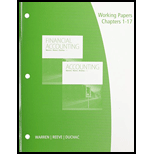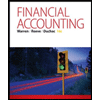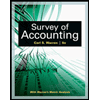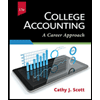
Internal Control: Internal control refers to the policies, and plans of the business organization along with other measures with a view to safeguard its assets, encourage the employees to adhere to the plans, to improve on the operational efficiency, and to ensure correct and reliable accounting information. Internal control is a process which ensures continuous reliability of accomplishment of a company’s objectives, related to operations, financial reporting, and in conformity with laws and regulations.
Five elements of internal control:
- Control Environment: Control Environment refers to the attitude of top brass of the company or the corporate culture. The top brass of the company must set the tone to improve the morale for rest of the employees of the business.
- Risk assessment: The business must be able identify the risk associated with it, and accordingly use the internal control to safeguard its assets and ensures fairness in presentation in accounting information.
- Control procedures: The objective of setting the control procedure is to ensure that the business achieves its objectives.
- Monitoring controls: The internal control used in the business is being monitored by the internal auditors who are hired by the business, to ensure that the employees are adhering to the policies of the business and running the operations efficiently. The external auditors on the other hand ensures that the business accounting records are being maintained in accordance with the Generally Accepted Accounting Principles (GAAP).
- Information and communication: Information and communication system is important for a business and hence only authorized persons should be allowed the access to the confidential accounting information. Approvals are also should be made mandatory for the transactions by the
control system.
Given: Conversation between two cash register clerks.
To discuss: The case from the viewpoint of proper controls and professional behavior.
Want to see the full answer?
Check out a sample textbook solution
Chapter 8 Solutions
Working Papers, Chapters 1-17 for Warren/Reeve/Duchac's Accounting, 26th and Financial Accounting, 14th
- The overhead assigned to each unit of product A would bearrow_forwardRK Co. sells snowboards. Each snowboard requires direct materials for $140, direct labor for $55, and variable overhead of $64. The company expects fixed overhead costs of $673,000 and fixed selling and administrative costs of $160,000 for the next year. It expects to produce and sell 11,900 snowboards in the next year. What will be the selling price per unit if RK uses a mark-up of 17% of the total cost? Answerarrow_forward5 PTSarrow_forward
 Financial AccountingAccountingISBN:9781305088436Author:Carl Warren, Jim Reeve, Jonathan DuchacPublisher:Cengage Learning
Financial AccountingAccountingISBN:9781305088436Author:Carl Warren, Jim Reeve, Jonathan DuchacPublisher:Cengage Learning Survey of Accounting (Accounting I)AccountingISBN:9781305961883Author:Carl WarrenPublisher:Cengage LearningPrinciples of Accounting Volume 1AccountingISBN:9781947172685Author:OpenStaxPublisher:OpenStax College
Survey of Accounting (Accounting I)AccountingISBN:9781305961883Author:Carl WarrenPublisher:Cengage LearningPrinciples of Accounting Volume 1AccountingISBN:9781947172685Author:OpenStaxPublisher:OpenStax College College Accounting (Book Only): A Career ApproachAccountingISBN:9781337280570Author:Scott, Cathy J.Publisher:South-Western College PubPrinciples of Accounting Volume 2AccountingISBN:9781947172609Author:OpenStaxPublisher:OpenStax College
College Accounting (Book Only): A Career ApproachAccountingISBN:9781337280570Author:Scott, Cathy J.Publisher:South-Western College PubPrinciples of Accounting Volume 2AccountingISBN:9781947172609Author:OpenStaxPublisher:OpenStax College





